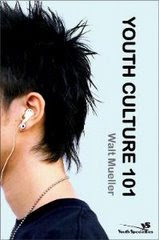 The first words of Andrew Marin’s book, Love Is an Orientation: Elevating the Conversation with the Gay Community (InterVarsity Press, 2010), reads as a statement that reflects my own life: “I am a straight, white, conservative, Bible-believing, evangelical male. I was raised in a Christian home in a conservative suburb of Chicago and grew up in a large evangelical church. And I wanted absolutely nothing to do with the gay, lesbian bisexual and transgender (GLBT) community.” However, over the last 10 years he has immersed himself in this community choosing to live in the gay district of Chicago called Boystown. One of the most polarizing discussions that can happen in our church today surrounds the topic of homosexuality. As someone that works often to illuminate and prompt dialogue on sexuality, this can be one of the most sobering and difficult conversations I have. To be honest, I would rather not discuss this topic because I know what lies beneath and it is neither easy nor quick to understand.
The first words of Andrew Marin’s book, Love Is an Orientation: Elevating the Conversation with the Gay Community (InterVarsity Press, 2010), reads as a statement that reflects my own life: “I am a straight, white, conservative, Bible-believing, evangelical male. I was raised in a Christian home in a conservative suburb of Chicago and grew up in a large evangelical church. And I wanted absolutely nothing to do with the gay, lesbian bisexual and transgender (GLBT) community.” However, over the last 10 years he has immersed himself in this community choosing to live in the gay district of Chicago called Boystown. One of the most polarizing discussions that can happen in our church today surrounds the topic of homosexuality. As someone that works often to illuminate and prompt dialogue on sexuality, this can be one of the most sobering and difficult conversations I have. To be honest, I would rather not discuss this topic because I know what lies beneath and it is neither easy nor quick to understand.Marin’s story begins when three of his best friends “come out” over a three-month period. This title wave of revelation led him to deeply consider what he believed and how he was going to cope with this new reality, all three of his closest friends were gay! His decision, however, was one that some find strange. In order to completely answer the Holy Spirit’s call in his life, he decided to fully immerse himself in the GLBT community. Marin says that he wanted to be, “the most involved, gayest straight dude on the face of the earth.”
His immersion in this culture is what led him to write Love Is an Orientation. It is a challenging, yet dynamic work of literature on the issues surrounding the intersection of the church and the GLBT community. He points out that we need to begin moving past our default responses toward the GLBT community. He is not asking Christians to change their beliefs, nor is he asking them to change their foundational understanding of Scripture. His heart is to create a new paradigm that elevates our discussion on this issue.
Marin writes, “We have no problem wrestling with apologetics for people of different ethnicities and cultures that are totally removed from ours. Christians diligently study other belief systems and incarnationally move into neighborhoods of people with different beliefs, join their groups, attend their events and partake in their daily life, reveling in the unique opportunity to engage in what we don’t know. But Christians do none of those things for the GLBT community.”
Love Is an Orientation will challenge you to believe that their lives are as real as ours, and our faith in Jesus Christ requires us to meticulously seek honest transparency not only within the GLBT community but in ourselves as well.



















